Do you have a question about the Cornelius Series 200 and is the answer not in the manual?
Charts showing ice production rates for Series 200 based on ambient and water temperatures.
Lists key technical details like compressor, refrigerant, voltage, and electrical ratings for Series 200.
Charts showing ice production rates for Series 525 based on ambient and water temperatures.
Lists key technical details like compressor, refrigerant, voltage, and electrical ratings for Series 525.
Charts showing ice production rates for Series 725 based on ambient and water temperatures.
Lists key technical details like compressor, refrigerant, voltage, and electrical ratings for Series 725.
Explains the overall electrical circuit operation and component interactions.
Details the function of various electrical components like switches, relays, and thermostats.
Explains the operation and types of potential relays and capacitors used in the system.
General maintenance tasks including checking power, water level, and cleaning the condenser.
Procedures for inspecting wear on auger, guide bushing, shell, and O-rings.
Step-by-step guide for sanitizing and cleaning the ice maker components.
Information on water impurities and recommended treatment methods for optimal performance.
Instructions for preparing the unit for storage during freezing temperatures.
Procedure for cleaning the air-cooled condenser coil to maintain efficiency.
Lists probable causes and remedies for the unit failing to start or run.
Identifies causes such as low voltage or dirty condenser for intermittent compressor operation.
Troubleshooting steps for producing wet ice, including temperature and water level issues.
Diagnoses issues like refrigerant leaks or lack of water causing no ice production.
Addresses causes of water leaks, such as faulty float valves or O-ring issues.
Troubleshooting for noise issues, including scale deposits and worn bearings.
Diagnoses reasons for the unit shutting off and resetting, like ice jams or thermostat settings.
Covers causes like alignment issues, temperature, or component failures leading to reset.
Charts showing ice production rates for Series 200 based on ambient and water temperatures.
Lists key technical details like compressor, refrigerant, voltage, and electrical ratings for Series 200.
Charts showing ice production rates for Series 525 based on ambient and water temperatures.
Lists key technical details like compressor, refrigerant, voltage, and electrical ratings for Series 525.
Charts showing ice production rates for Series 725 based on ambient and water temperatures.
Lists key technical details like compressor, refrigerant, voltage, and electrical ratings for Series 725.
Explains the overall electrical circuit operation and component interactions.
Details the function of various electrical components like switches, relays, and thermostats.
Explains the operation and types of potential relays and capacitors used in the system.
General maintenance tasks including checking power, water level, and cleaning the condenser.
Procedures for inspecting wear on auger, guide bushing, shell, and O-rings.
Step-by-step guide for sanitizing and cleaning the ice maker components.
Information on water impurities and recommended treatment methods for optimal performance.
Instructions for preparing the unit for storage during freezing temperatures.
Procedure for cleaning the air-cooled condenser coil to maintain efficiency.
Lists probable causes and remedies for the unit failing to start or run.
Identifies causes such as low voltage or dirty condenser for intermittent compressor operation.
Troubleshooting steps for producing wet ice, including temperature and water level issues.
Diagnoses issues like refrigerant leaks or lack of water causing no ice production.
Addresses causes of water leaks, such as faulty float valves or O-ring issues.
Troubleshooting for noise issues, including scale deposits and worn bearings.
Diagnoses reasons for the unit shutting off and resetting, like ice jams or thermostat settings.
Covers causes like alignment issues, temperature, or component failures leading to reset.
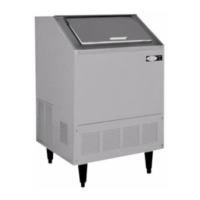
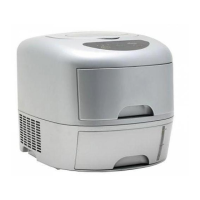
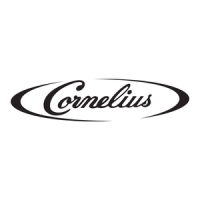



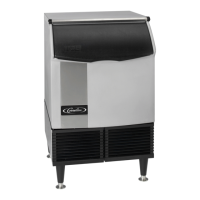
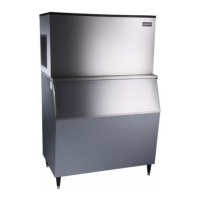
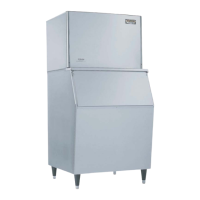



